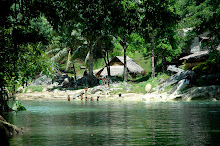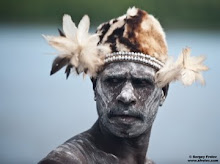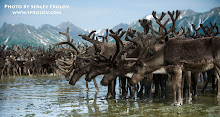 Hi guys! Ni Hao! I have now been on holiday for eight days and I am truly starting to relax. We arrived last night in Guilin after a two-hour local flight from Nanking and are now ensconced in a gorgeous hotel. We find it hard to believe that it’s only three star! All our other hotels have been more than adequate (with the exception of one) but this is GREAT. And we’re here for three nights. Yeeha.
Hi guys! Ni Hao! I have now been on holiday for eight days and I am truly starting to relax. We arrived last night in Guilin after a two-hour local flight from Nanking and are now ensconced in a gorgeous hotel. We find it hard to believe that it’s only three star! All our other hotels have been more than adequate (with the exception of one) but this is GREAT. And we’re here for three nights. Yeeha.To recap so far: my first three days in Shanghai were packed. I was very impressed with the city which, quite rightly, has been dubbed “the New York of the East”. It’s a seriously sophisticated metropolis that makes for great shopping – I spent far too much money in the space of 36 hours – and it also makes your head hurt. I was, truth be told, relieved to leave.
Bogglingly, Shanghai has developed to this point in the space, really, of only the past couple of hundred years when Westerners made it a trading nexus and systematically went about taming the population with opium. That led to the Boxer Rebellion in the early 1900s, when the common people, to use tourist guide parlance, tried to throw out the foreigners.
Alas, one power-hungry Dowager Empress sided with the Westerners and the rebellion was quelled. It’s taken some time for the new democracy to effectively oust all foreigners and to welcome them again as tourists. Good for the Chinese, I say. They’re incredibly patriotic, and very keen to not be ruled by anyone but themselves. Sovereignty is sanctity, as they say….
Our next stop was Hangzhou (pronounced Hung-jo), population only four million (get outta here) and here we had two days of more pastoral pursuits: incense-infused pagodas, temples and parks, lakeside strolls and river boat outings. Aaaaaah! Weather has been kind to us throughout, with occasional days of light drizzle, nothing that compares to the deluge I believe Sydney is experiencing.
Speaking of the outside world, Jennifer and I plan to follow the World Cup as best we can. Our hotel has BBC television, so we will be watching the opening ceremony tonight along with a gazillion others around the world.
I guess one thing many of you will be wondering is, what is the food like? Well, you are asking the wrong person, because I tend to treat meals as mere fuel stops, but cousin Jennifer, on the other hand, relishes the banquet-style eating. Egads, how do these people stay slim? Mealtimes here are over-the-top: dish after dish after dish! Usually, there’s a plate of duck, some meatballs, spicy chicken, prawns or fish, vegetable dishes, a light soup with seaweed and egg and, finally, rice. We’ve adopted a simple routine of light breakfast, hearty lunch, and almost non-existent dinner (usually yoghurt).

Next stop was Nanjing, north of Hangszhou and west of Shanghai, which was the capital of China for ten dynasties (around the 1300s). This is an enormous, sprawling city with hundreds of corridors of apartment blocks to house the population; strangely enough, the high-rise blocks don’t look too bad, though they are hardly as charming as the more rarely seen traditional houses. Most people in Australia may still live in a house but in China, it is only the extremely wealthy who own a house. Property is bought per square metre in China… and no surprises there. With a population of 1.3 billion - easily 100 times greater than that of Australia – what can one expect?
Nanjing is a city steeped with history and culture and we were boggled by what we learned and saw here. First stop was the mausoleum of the father of the nation, Dr Sun Yat-Sen, who founded the Democratic Party in 1924, and paved the way for self-rule as opposed to centuries of feudal dynasties. Dr Sun studied medicine in Hawaii in the early 1900s, but turned to a career in politics. “It is easy to cure people,” he said. “It is far harder to cure a nation.
Three hundred and ninety-two steps lead to Dr Sun’s burial site, the 392 steps representing the 392 million who lived in China at the time of Dr Sun’s death. My, how has the population exploded since then!
Close by, in the same gigantic park, is another burial site, this one in honour of the Ming Dynasty’s founding Emperor. The two sites are in complete contrast to one another – the former is built to more classical designs and is partly inspired, one senses, by European architecture; the latter, of course, is more traditional, with a high moat wall of enormous stone bricks, and an ornate wooden structure, once painted and decorated and since meticulously restored, housing the Emperor’s remains.
The following day in Nanjing was a highlight: the Nanjing Massacre museum.
My goodness, they document their history well, the Chinese!
This museum records the witness testimonies of hundreds of people who survived the slaughter of 300,000 Chinese civilians in December 1937 when Japan invaded Nanjing. Ironically, this museum reminded me of the Japanese museum in Nagasaki which records the suffering that resulted after the Americans dropped a nuclear bomb on its city in 1945. Both museums pay brilliant testimony to the horrors of war. Strikingly, the Nanjing museum ends on a beautiful, poetic “epilogue” where it asks us all to forgive what happened, but never to forget, in order that it never happen again. Amen to that, I say.
Then, before leaving, we went downtown to Nanjing’s Old Town (think of The Rocks) and v
 isited a famous Confucius temple. I was delighted to learn more about a guy, born 500 BC, who is so often quoted on Quotations.com. This guy believed in scholarliness and preached much wisdom about how to live a balanced and harmonious life.
isited a famous Confucius temple. I was delighted to learn more about a guy, born 500 BC, who is so often quoted on Quotations.com. This guy believed in scholarliness and preached much wisdom about how to live a balanced and harmonious life.To balance and harmony, I say, and toast you with a Dragon Well green tea! For now, amigos, it’s au revoir as we launch ourselves into another day…













Hi Josephine. Glad to hear you are well and love your blend of history and personal anecdote. Mel.XXX
ReplyDelete